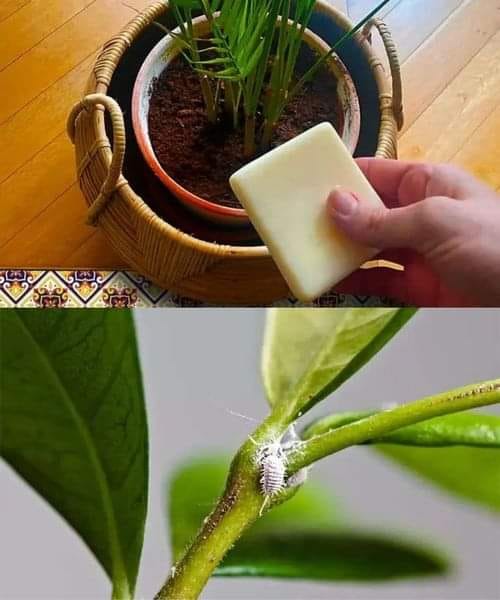The Great Trick to Eliminate Pests That Attack Your Plants: Say Goodbye to Aphids Naturally 🌱🐜
Aphids are among the most common garden pests, sucking the sap from plants and leaving them weak, stunted, and susceptible to disease. But don’t worry—there’s a natural, effective way to get rid of them without resorting to harsh chemicals. Here’s how to eliminate aphids and protect your plants the eco-friendly way.
Step 1: Identify the Problem
- Look for signs of aphid infestations, including:
- Yellowing or curling leaves.
- Sticky residue (honeydew) on leaves or stems.
- Presence of tiny, pear-shaped bugs in clusters on new growth or under leaves.
Step 2: Natural Remedies to Eliminate Aphids
1. Spray with Soapy Water
- Why It Works: Dish soap breaks down the aphids’ protective outer coating, causing them to dehydrate.
- How to Make It:
- Mix 1 teaspoon of dish soap with 1 liter of water.
- Pour the mixture into a spray bottle.
- Spray directly onto aphids, ensuring good coverage under leaves.
- Repeat Every Few Days: Reapply until the aphids are gone.
2. Use Neem Oil
- Why It Works: Neem oil disrupts aphids’ feeding and reproductive cycles.
- How to Apply:
- Mix 2 teaspoons of neem oil with 1 liter of water and a few drops of dish soap.
- Spray directly on infested plants every 7–10 days.
3. Blast with Water
- Why It Works: A strong jet of water physically knocks aphids off plants.
- How to Do It:
- Use a garden hose with a spray nozzle to target aphid clusters.
- Repeat as needed, especially after spotting new infestations.
4. Introduce Beneficial Insects
- Why It Works: Ladybugs, lacewings, and parasitic wasps are natural predators of aphids.
- How to Do It:
- Purchase live beneficial insects from garden centers or online.
- Release them near infested plants for effective, long-term control.
5. Garlic Spray
- Why It Works: Garlic’s strong scent deters aphids and other pests.
- How to Make It:
- Blend 2 garlic cloves with 1 liter of water.
- Strain and spray onto plants every few days.
6. DIY Aphid Traps
- Why It Works: Sticky traps capture aphids, reducing their numbers.
- How to Make It:
- Coat a yellow index card with petroleum jelly or a sticky substance.
- Place it near plants to attract and trap aphids.
Step 3: Prevent Future Infestations
- Keep Plants Healthy: Strong, healthy plants are less susceptible to pests. Ensure they receive adequate sunlight, water, and nutrients.
- Attract Natural Predators: Grow plants like dill, fennel, or marigolds to attract ladybugs and lacewings.
- Companion Planting: Use plants like garlic, chives, and mint, which naturally repel aphids.
- Regular Monitoring: Check plants weekly for signs of pests and act quickly if you spot an infestation.
Why Choose Natural Solutions?
- Safe for the environment, pets, and beneficial insects.
- Cost-effective and easy to implement using household items.
- Keeps your garden chemical-free and healthy.
By following these simple steps and using natural methods, you can effectively eliminate aphids and keep your plants thriving. 🌿 Say goodbye to pests and hello to a healthier, happier garden! 🌟
💬 What’s your go-to trick for dealing with aphids? Share your tips in the comments below!
#GardeningHacks #NaturalPestControl #HealthyPlants
